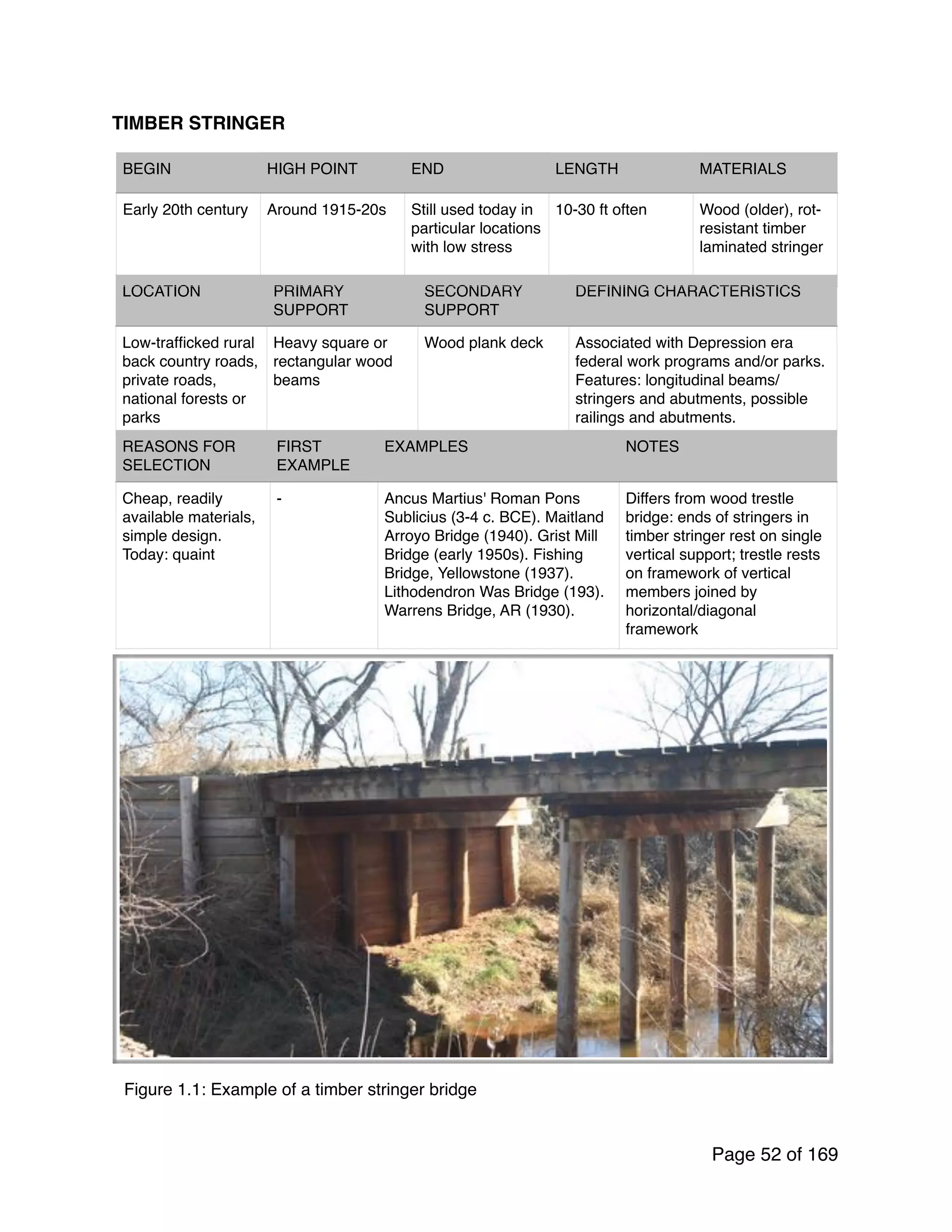The document discusses the history and properties of stone as a bridge building material. Stone has been used since ancient times due to its abundance. It is strong in compression but weak in tension, making the arch a common stone bridge type. Examples of notable stone bridges are discussed, including aqueducts from ancient Rome and medieval bridges still standing today, highlighting stone's longevity compared to other earlier materials. Stone remains a popular choice for historical reference, though other materials allow for more structural options.






























































































































































































